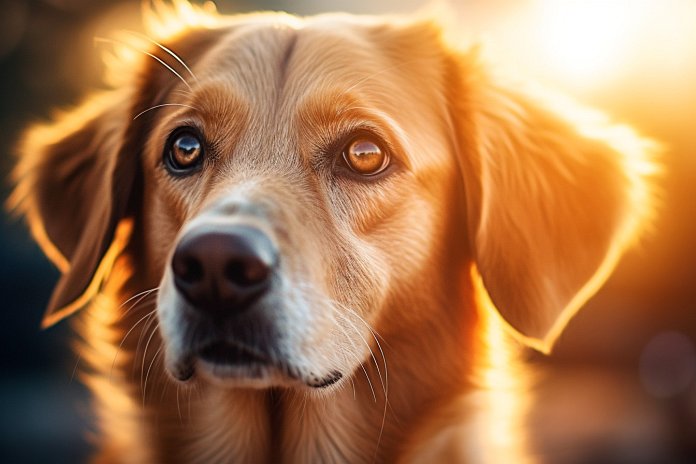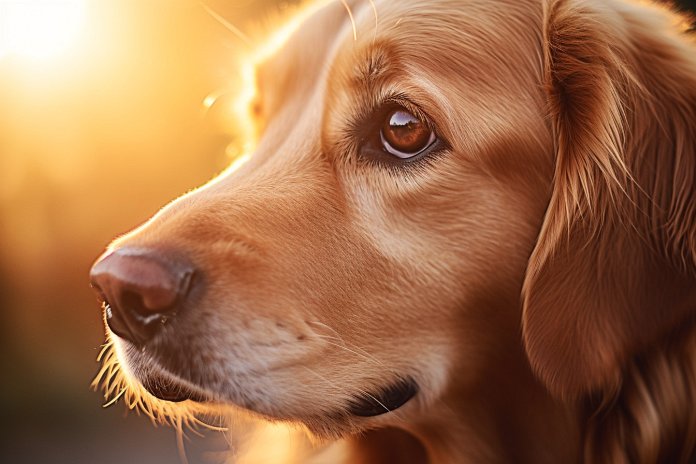
The family dog, a beloved companion, has incredible talents. While they may be a cherished pet to you, they have the potential to be a lifesaver for people with cancer. But how did dogs go from being wolves to medical detector dogs that can sense different types of cancer? Our physician dogs are revolutionizing science and experts are recognizing their remarkable abilities. Could we see future scenarios where dogs like Dr. Dobermans check us for cancer and give their expert opinion on whether it’s malignant or benign?
Signs Your Dog Could Detect Cancer
Dogs are like the guardians of scent, with noses that can pick up even the most subtle smells. Every breed, from the smallest to the largest, can detect underground scents and track missing individuals. They can even stop large amounts of money from being smuggled across borders.
Given their powerful senses, it’s not surprising that dogs can detect cancer. Have you ever noticed how two dogs greet each other? They go into sniffing overdrive, checking each other out and gathering information about the other dog. This behavior is not just a way of saying hello; it’s a way for dogs to assess what’s going on with their fellow canines.
Cancer-detecting dogs are trained similarly to bomb- and drug-sniffing dogs. The good news is that our dogs are capable of detecting cancer in its early stages. Even when labs may have tested a melanoma as benign, a dog can often determine that it is actually malignant. In fact, a dog can pick up on the subtle scent of cancer even if it is at stage zero.
While humans rely on their eyes to see the world, dogs take in the world through their noses. The CEO of Medical Detection Dogs shared how her clever red lab, Daisy, detected her breast cancer. CNN reported that Daisy kept staring at her owner and then lunged at her chest. Eventually, a tumor was found, and thanks to Daisy’s early detection, the cancer could be treated.
Body Language
Some signs that your dog may be able to detect cancer include staring, being alert, whining, jumping up, raising a paw, and excessive licking. These behaviors can be indicative of a dog sensing something unusual or concerning in their owner’s body.
Other Signs
Additional signs that a dog may be able to detect cancer include trying to get their owner’s attention, continuously licking a specific part of a person’s body, and nuzzling an area of their owner’s body.
History of Dogs Sensing Cancer
Dogs have been involved in healing humans for centuries. In ancient Greece, there was a sanctuary where dogs were observed licking wounds, and this practice was then used on people. This healing sanctuary was dedicated to Asclepius, the Greek god of medicine.
The ancient Egyptians also believed in the healing power of a dog’s saliva and used it to treat open wounds. This belief has been passed down through generations, and even today, some people believe that a dog’s saliva has medicinal properties.
Thousands of years ago, the ancestors of our modern dogs were wolves that lived in packs and hunted for survival. Wolves have a keen sense of smell that helps them identify weak or sick prey. The International Wolf Center confirms that wolves prefer to target weak, ill, or old animals when hunting. It is likely that our dogs inherited this ability to detect illness, including cancer, from their wolf ancestors.
Science Proves Dogs Can Sense Cancer
In the late 80s, Yuji Satoh, a dog trainer in Tokyo, was training water rescue dogs and began to explore the potential of dogs in finding missing individuals. He discovered that dogs had an incredible sense of smell and could find almost anything.
Satoh wondered if his Labrador retriever, Marine, could be trained to detect cancer. After facing difficulties in obtaining samples from hospitals, he finally found a hospital willing to help. Over the course of a year and around one hundred tests, Marine achieved a 98% success rate in detecting cancer, specifically esophageal, stomach, and lung cancer.
Further research is focused on identifying the specific odor that indicates the presence of cancer. The goal is to develop a device that can analyze a person’s breath to detect the disease quickly and easily. Thanks to dogs’ natural smelling abilities, we may soon live in a world where cancer can be detected with ease.
Training Dogs to Smell Cancer
Dogs have a natural instinct for detecting illness in other animals and humans. There are numerous stories of untrained dogs alerting their owners to the presence of cancer.
Miranda’s Labrador/Pointer mix, JJ, started licking her neck persistently when she had been feeling unwell and was initially diagnosed with the flu. Miranda trusted her dog’s behavior and pushed for more tests. It turned out that JJ was right, as Miranda was ultimately diagnosed with thyroid cancer.
Training a dog to detect cancer follows a similar process to training them to sniff out drugs or explosives. Dogs are selected based on their willingness to learn and their keen sense of smell. Training begins with basic obedience at eight weeks old, and then dogs are taught to sniff out their favorite toys or tennis balls. Positive reinforcement and rewards are key components of this training.
The New York Times takes us inside the Penn Vet Working Dog Center, where Labradors and German Shepherds are often chosen for cancer detection work. Dogs best suited for this task have a meticulous and reserved approach to their work, unlike the high-energy dogs used for finding missing persons or detecting bombs in war zones. With a set of glasses and a white coat, a cancer-detecting dog becomes a scientific pup.
In training, dogs are presented with two vials containing fluid, one of which holds cancerous material. Dogs are rewarded when they choose the correct vial, creating a process of repetition and reinforcement to teach them to detect the specific scent of cancer.
Dogs are astonishing the cancer research community as they can often detect cancer cells before scientists can even test them using equipment. It is truly a testament to the power of nature, as dogs assist humans in the fight against this devastating disease that affects one in four people in the United States every year.
“Dogs: The Sniffing Guardians of the Galaxy, Detecting Cancer with Their Powerful Noses”

Tips & Things to Know
1️⃣ Dogs have a powerful sense of smell that allows them to detect cancer in its early stages. They can pick up on the subtle scent of cancer, even when it is at stage zero. This makes them valuable allies in the fight against this disease.
2️⃣ Pay attention to your dog’s behavior as it may indicate that they sense something is wrong. Signs such as staring, alertness, whining, jumping up, raised paw, and excessive licking may indicate that your dog is detecting cancer. It’s important to be aware of these signs and consult a medical professional if you notice them.
3️⃣ Dogs can be trained to detect cancer, similar to how they are trained to sniff out drugs or explosives. They undergo basic obedience training and are then taught to associate the scent of cancer with a reward, such as a toy. This training helps them become reliable cancer-detection companions and can potentially save lives.
Frequently Asked Questions, Answered ✅
1. How do dogs detect cancer?
– Dogs detect cancer through their powerful sense of smell. They are trained to recognize the scent of cancerous cells and can even detect cancer in its early stages.
2. What are the signs that a dog can sense cancer?
– Some signs that a dog can sense cancer include staring, alertness, whining, jumping up, raised paw, and continuous licking of a specific area of a person’s body.
3. What is the history of dogs sensing cancer?
– Dogs have been observed licking wounds to heal humans since ancient times. The ancient Greeks and Egyptians believed that a dog’s saliva had medicinal properties. Wolves, the ancestors of dogs, have a keen sense of smell and can target sick animals, suggesting that dogs inherited this ability.
4. How has science proven that dogs can sense cancer?
– In the late 80s, studies conducted by Yuji Satoh showed that dogs can detect cancer with a 98% success rate. By sniffing a person’s breath, dogs can identify the presence of certain types of cancer. Research is ongoing to pinpoint the specific odor that indicates cancer.
5. How are dogs trained to smell cancer?
– Dogs are selected for their willingness to learn and their keen sense of smell. They undergo basic obedience training and then are taught to associate the scent of cancer with a reward, such as their favorite toy. Dogs are trained to choose the vial containing cancerous material, and they are rewarded when they make the correct choice.